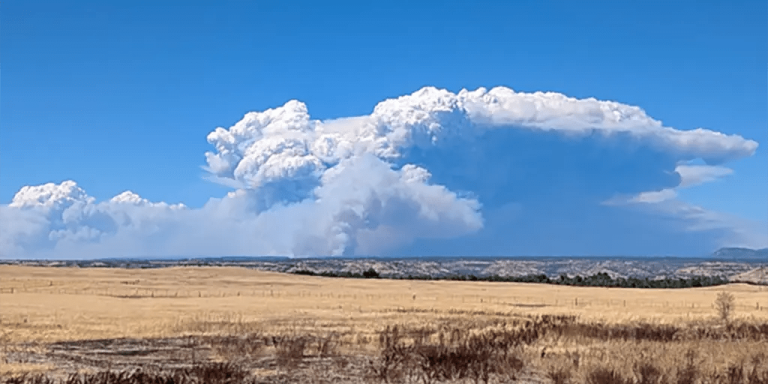Note: This is a reprint of my column “Editor for a Day” in the Chico Enterprise-Record, which includes factual reference links and charts for the convenience of readers who access WUWT directly. The above photo of cumulus clouds from the park fire was taken while I was observing the progress of the fire – Anthony
July 30, new york times (The New York Times) published an article titled “How did park fires get so big, so fast?” which claimed, “High temperatures have been breaking records all summer long, and… As the burn continues, records will likely continue to fall in the coming years.
The article provides no data or citations to support this claim, instead relying on the opinions of so-called climate experts who have nothing to do with the fires. Last week, Professor Mark Stemen wrote in an op-ed: “…Climate change is causing fires to spread overnight to Tehama County.” How ridiculous! Climate does not act on short time scales or in local locations.
This kind of “The causal relationship is forced”(to coin a phrase) has become increasingly common among journalists and climate advocates as they work to fit any weather event or disaster into the climate change narrative.
Like Stemen's claims, the New York Times' claims about “a very clear fingerprint of climate change” in the dry vegetation that fueled the park fires are nothing more than personal opinions, without scientific citations or support for these claims.
Although there was a heat wave before the park fire, it had no impact on the fire. Butte and Tehama counties, where the fire spread, were not in drought, according to July 23 data from the U.S. Drought Monitor, the day before the Park Fire was ignited by a criminal arsonist.
Therefore, the abnormally dry conditions caused by “climate change-induced drought” simply did not occur in the park fires. Without arson, fires would not exist.
The fire started in Bidwell Park. Just north of this point, large areas of grass and scrub exist. Combine the ignition with the day's sustained southerly winds of 20-25 mph, and it's no surprise that the fire quickly spread northward. Rick Carhart, public information officer for Cal Fire in Butte County, confirmed in a phone interview that the area “has not had natural burning in decades and has not had controlled burning to reduce fuel loads,” he added. , “The high fuel load, combined with the winds that day, created a very intense fire.”
If fires are now occurring at cooler than normal temperatures (in California), is their slowed spread also due to climate change?
Climate change has no impact on how fires start or spread quickly—local weather and crime are to blame. Grass drying (occurring every spring) and heat waves (occurring every summer) are weather patterns on short-term time scales, not long-term climate changes.
The Intergovernmental Panel on Climate Change has found no climate signals for fires caused by thunderstorms or lightning, and there is no increasing trend. Additionally, NASA satellites have documented a long-term decline in wildfires around the world. NASA reports that satellite measurements show that the amount of burned land worldwide has decreased by 25% since 2003.

A 2007 paper in the journal Forest Ecology and Management According to reports, before European colonization in the 1800s, more than 4.4 million acres of forest and scrub burned in California every year. California now burns only 90,000 to 1.6 million acres annually, compared with 4.4 million acres burned annually before European colonization.
Clearly, the California wildfires have nothing to do with climate change. If they existed, current fires would consume more than 4.4 million acres of land each year – but that's not happening. The simple fact is: arsonists and lightning are the culprits of most wildfires.

The intensity and coverage of wildfires vary widely from year to year, as evidenced by a 2022 New York Times story: Why California’s 2022 wildfire season was unexpectedly quiet. The year-by-year fire map in the article demonstrates this nicely. Curiously, there is a statistical correlation between the Spotted Owl ruling and the increase in acreage burned since 1990 due to lack of forest management.

The New York Times believes it can deduce the climate-fire connection from its New York office. At least Stemen was local, but still wrong.
Climate activists and journalists seem more concerned with advancing their misguided climate agenda than reporting the facts.
Factual references are posted here: https://wattsupwiththat.com/newspaper-letter-references/
Anthony Watts is a former meteorologist for KHSL TV/Action News Now. He provides daily weather forecasts for KPAY Radio and is a senior fellow on climate and environment at the Heartland Institute in Chicago. He also runs the world’s most viewed climate-related website, wattsupwiththat.com
Relevant
